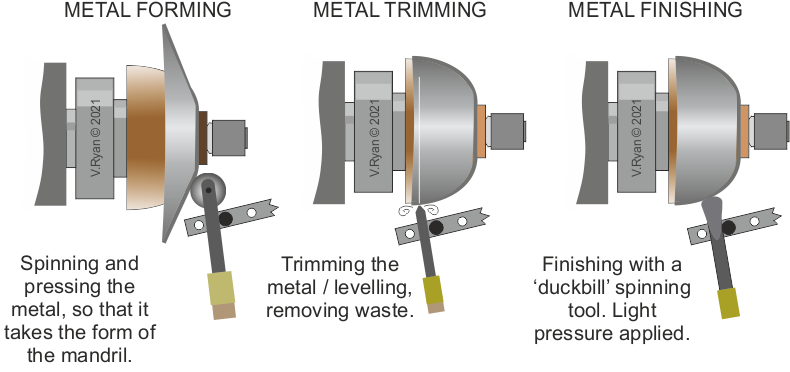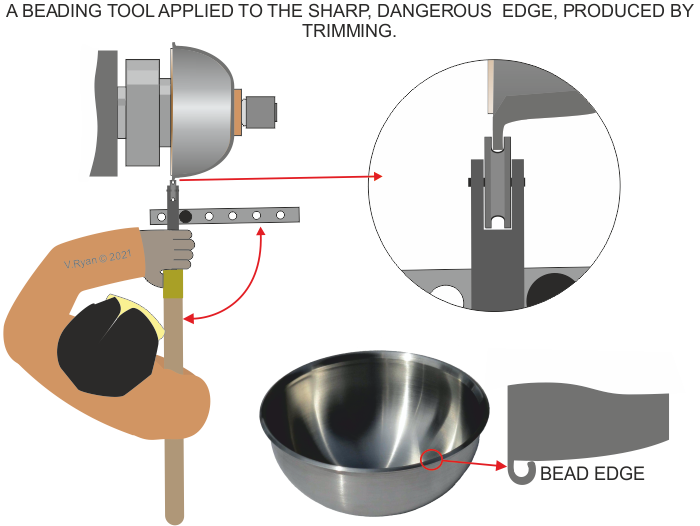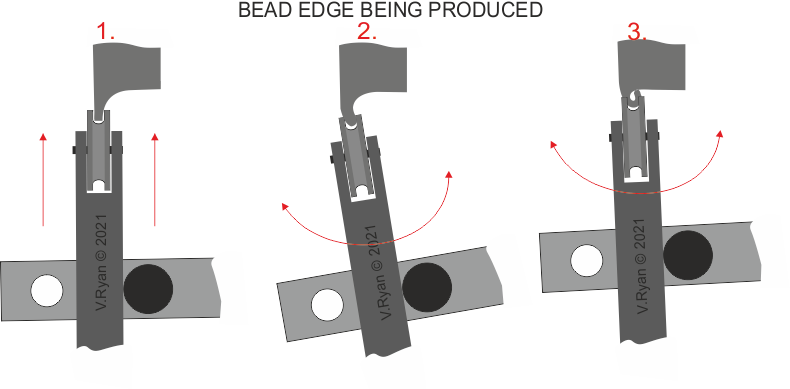V.Ryan © 2021



2. Compared to other processes, spinning is an efficient method of manufacturing sheet metal, symmetrical forms.
3. The finished ‘spun’ metal, is very strong and resistant to knocks and drops. This is due to the way the granular structure of the metal is formed, during the spinning process.
4. If the blanks are prepared with care and accuracy, spinning metal results in very little waste, saving money. Unlike the stamping of metal, where waste can be generated.
5. The final surface finish, does not require complex, time consuming polishing processes. The spinning process itself, burnishes the metal’s surface.
6. Metal spinning can be applied to small and large scale production runs.
7. A variety of geometrical shapes can be achieved including; Conical, Spherical, Parabolic and Cylindrical forms.
2. Manual spinning is not economic for large scale production.
3. With manual spinning, it is difficult to manufacture repeat forms to the same standard.
4. Safety is a key issue with spinning, due to the nature of the process. An experienced, skilled, well trained operator is required.
5. If the metal is damaged when spinning, it is advisable to start again. Repairing damage sustained through the spinning process, mis usually impossible.
6. Spinning requires a skilled operator, with experience on a lathe. This requires significant investment in training.